The Peary-MacMillan Arctic Museum Reopens with Three New Exhibitions
By Bowdoin NewsThe Peary-MacMillan Arctic Museum officially reopens in the new and dramatic John and Lile Gibbons Center for Arctic Studies with three inaugural exhibitions.
Iñuit Qiñiġaaŋi: Contemporary Inuit Photography, curated by Iñupiat photographer Brian Adams, includes his works and those of four other artists and is meant to dismantle preconceptions and stereotypes of the Arctic as desolate, forbidding, and dangerous.
The photos address a range of topics, from troubling colonial histories to everyday activities taking place against backdrops of remarkable beauty and urban and rural built environments.
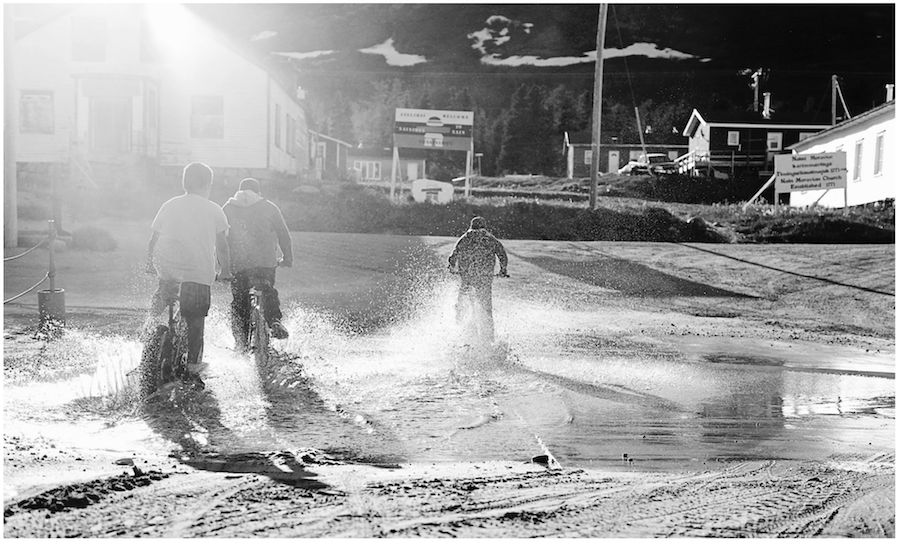
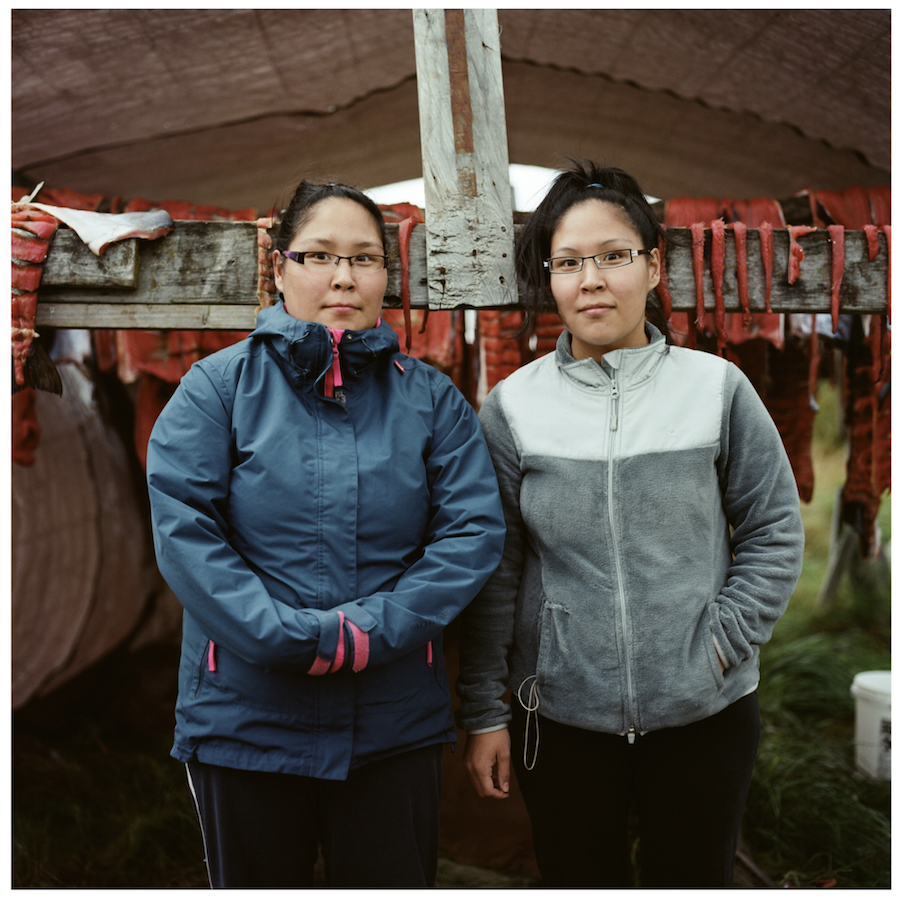
Andy Platt, a member of the Bowdoin College Class of 1966, and Carolyn Platt funded the purchase of the thirty prints that constitute the founding collection of contemporary Inuit photographs. The photography exhibit was made possible by donations from the Platts and the Rebecca Rowe ’97 Fund for Arctic Studies.
In addition to contemporary Inuit photography, a second exhibition, Collections and Recollections: Objects and the Stories They Tell, shares stories of how the museum's collection has developed over the years.
"It starts with old favorites from the MacMillan and Peary years but then looks at how the collection has grown," said Genevieve LeMoine, the museum’s curator and registrar, referring to Donald B. MacMillan and Robert E. Peary, both Bowdoin alumni and renowned Arctic explorers who supplied many of the museum's 41,000 objects.
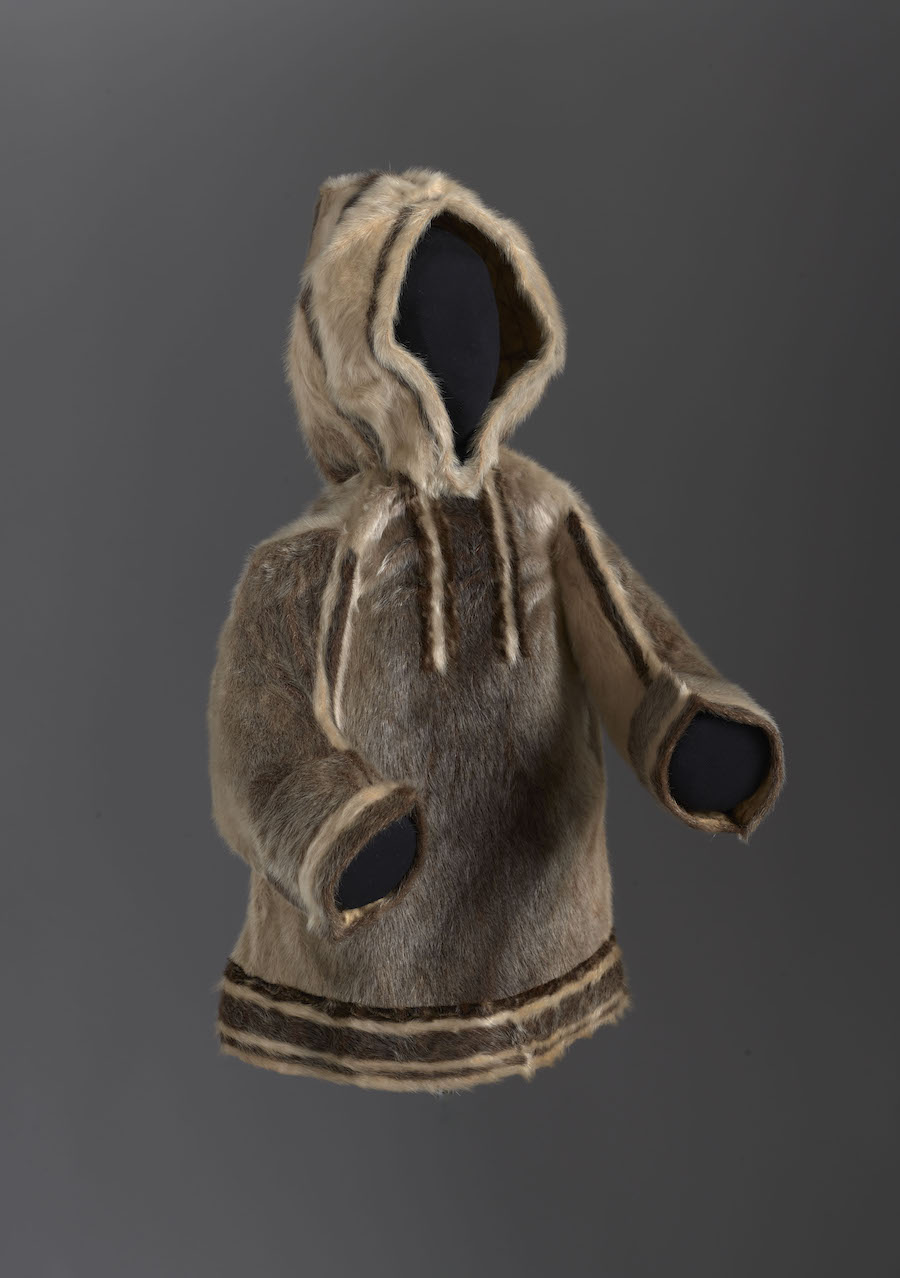
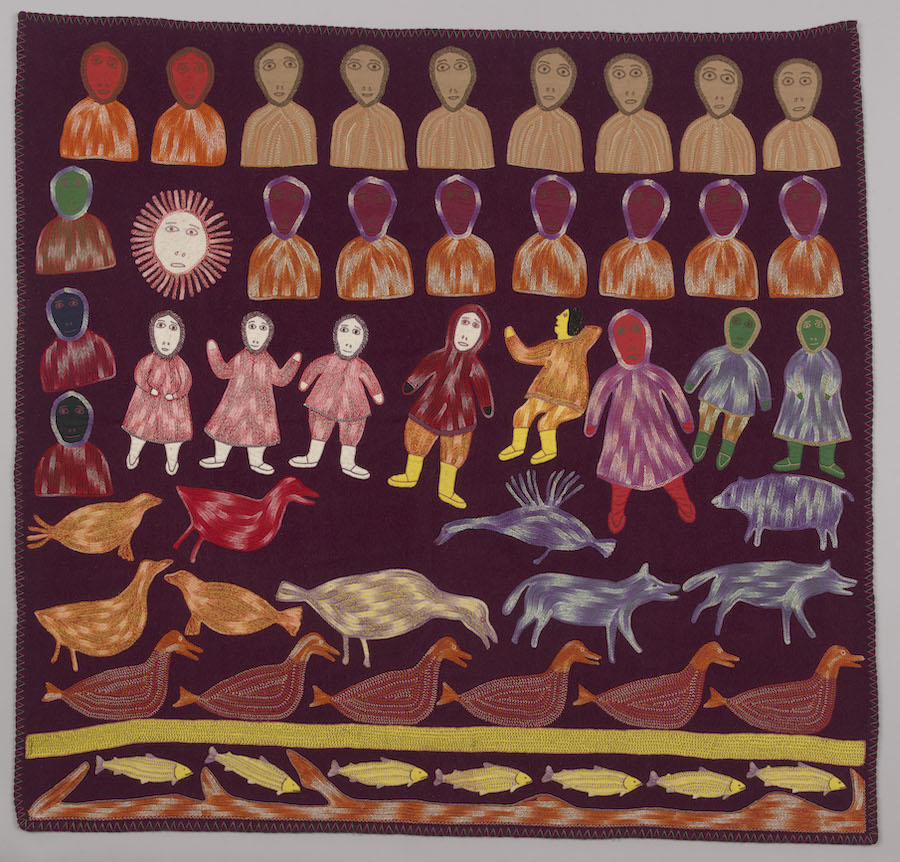
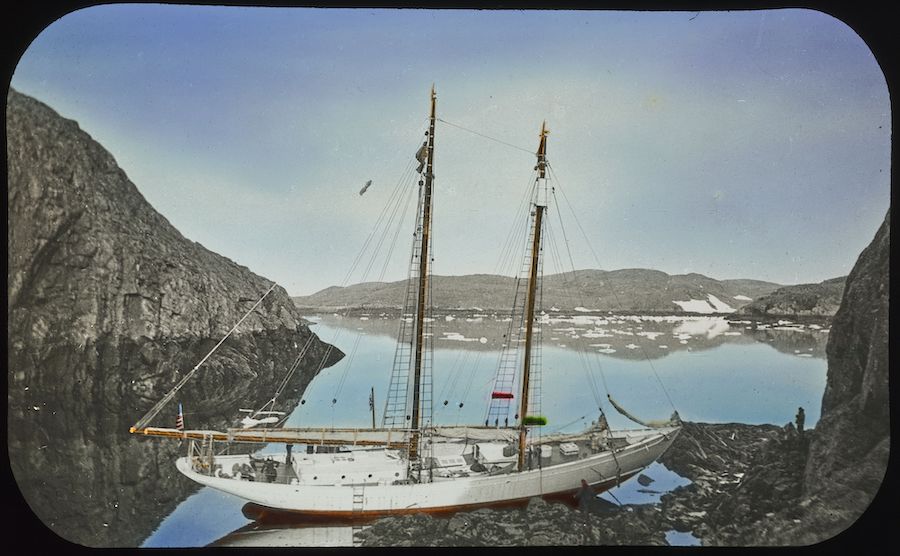
“Collections and Recollections is interesting because it documents the way our collecting has changed and how museums in general have changed over the years, as people's perceptions of what should be collected and the stories we want to tell are changing," LeMoine said.
A third exhibition, At Home in the North, explores historical and modern-day Inuit life, examining “the resilience of contemporary Inuit communities and the struggles they’re facing as they try to overcome the challenges of colonialism and climate change,” said LeMoine.
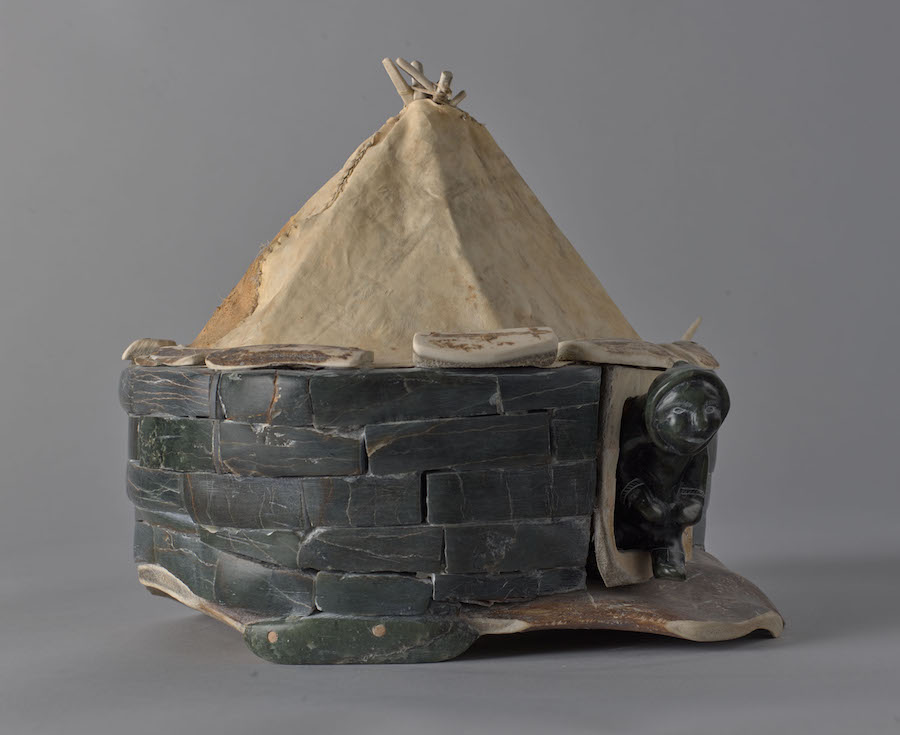
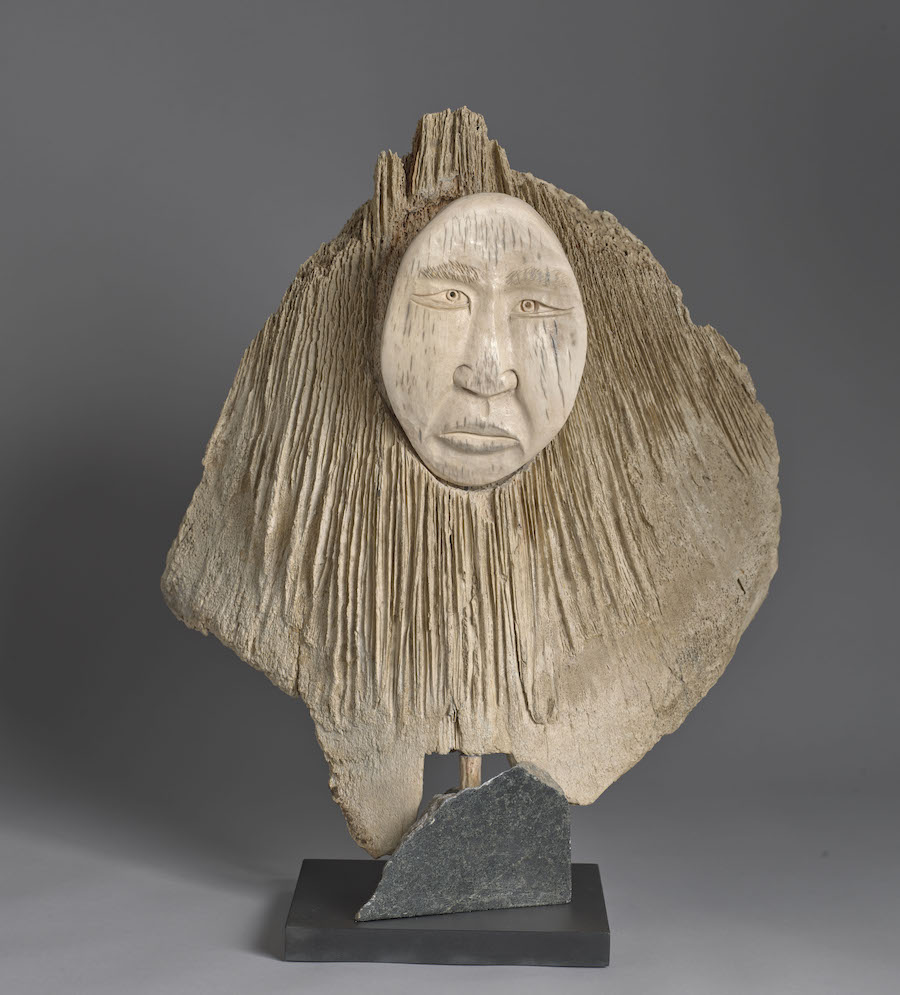
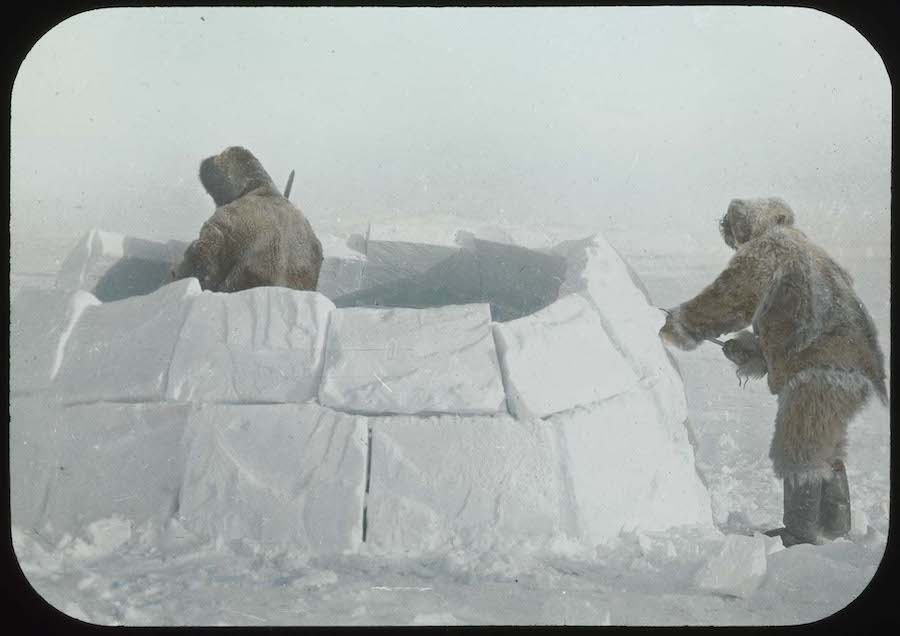
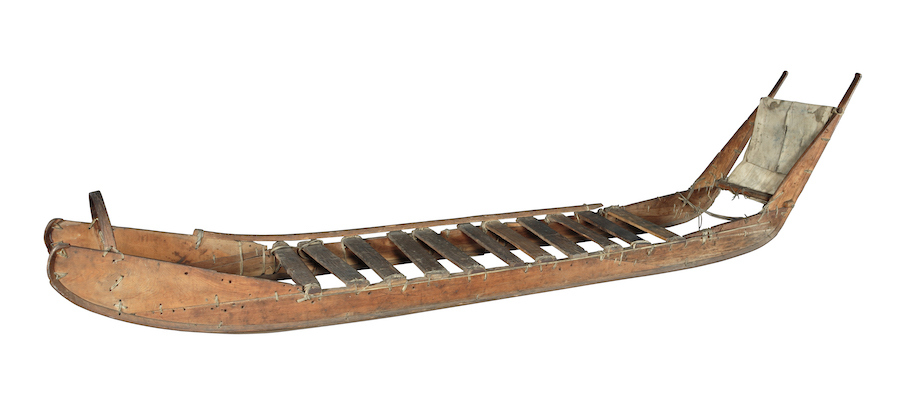
From the sledge that carried Peary to the North Pole in 1909 to a SmartBUOY that tells contemporary Inuit travelers if the sea ice is safe, the exhibition examines life in the Arctic historically and today.
At Home in the North also reflects the open-minded attitude of Peary, who recognized that the North was a hospitable home for many skillful and knowledgeable people.
"He succeeded [in his Arctic travels] because he saw that there were people living there quite successfully, and he realized that if he learned from them how to live like them, he would do fine," she said.
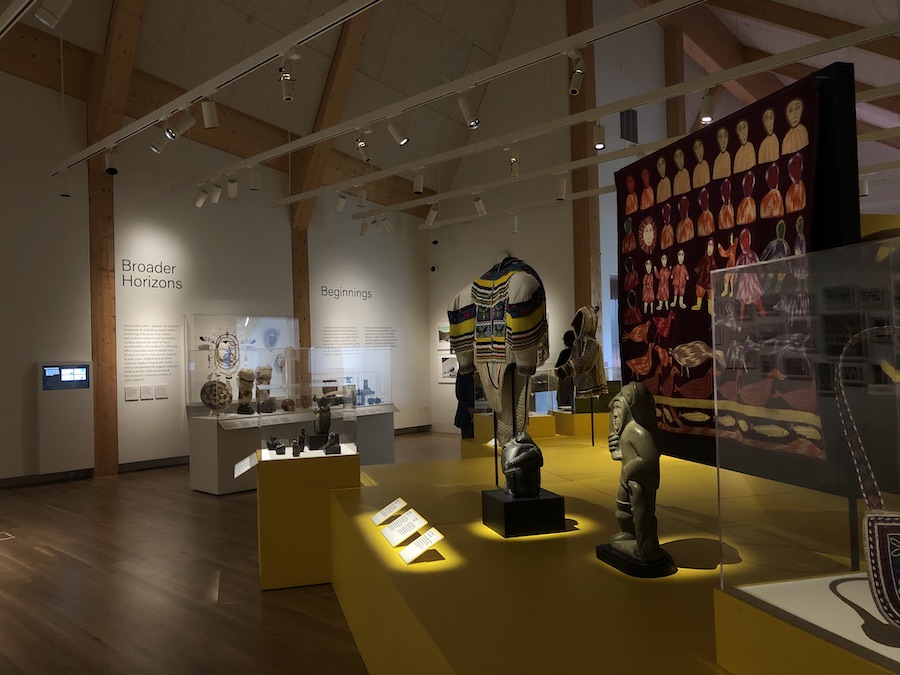
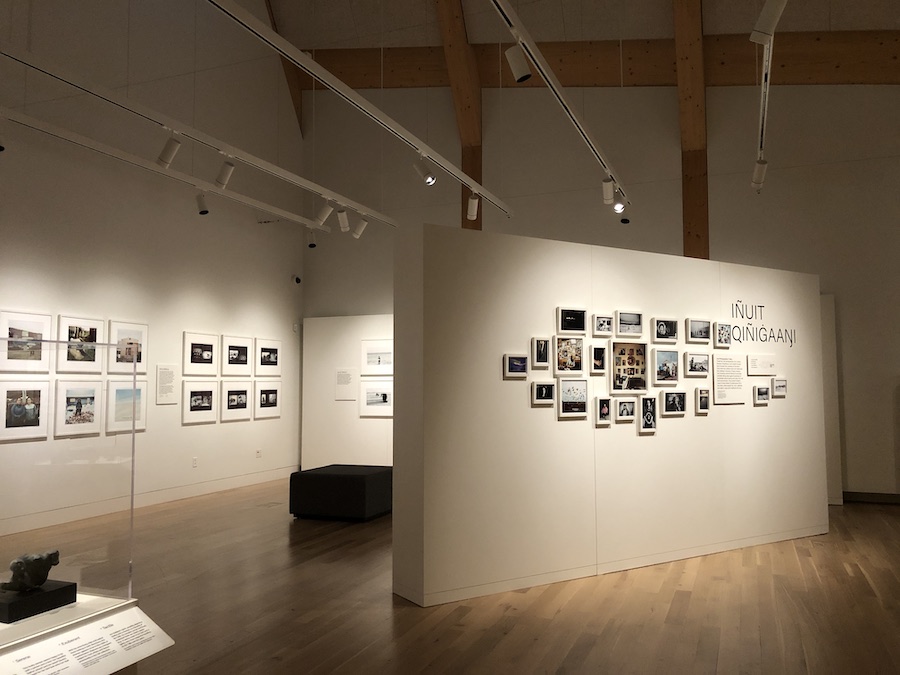
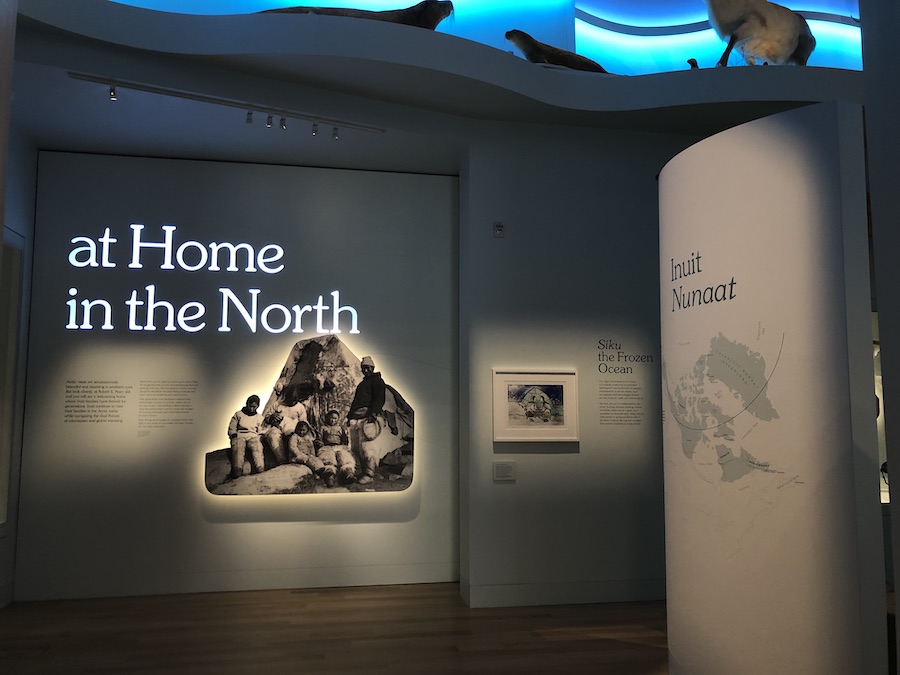
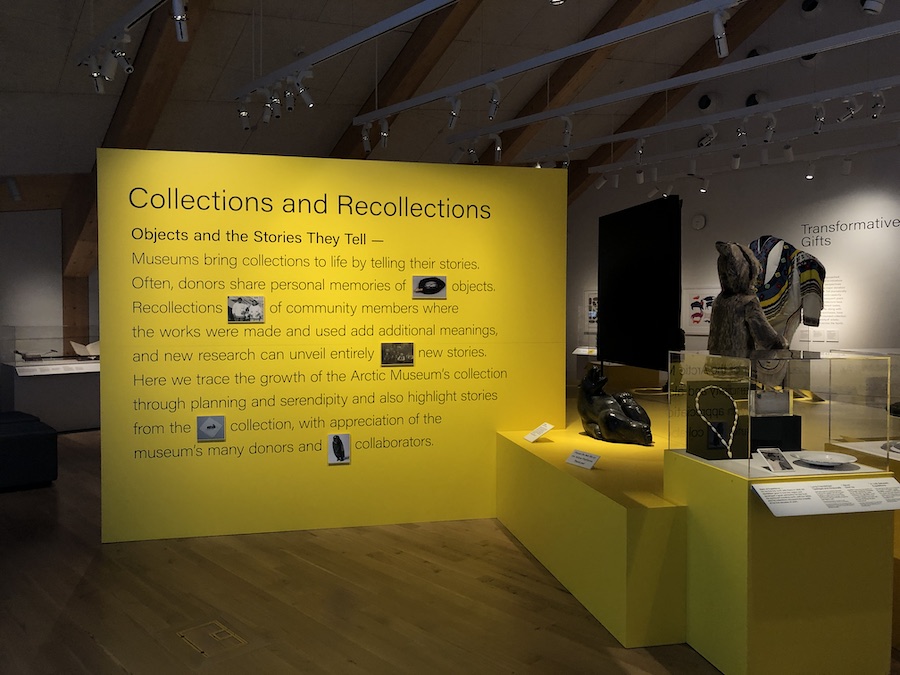
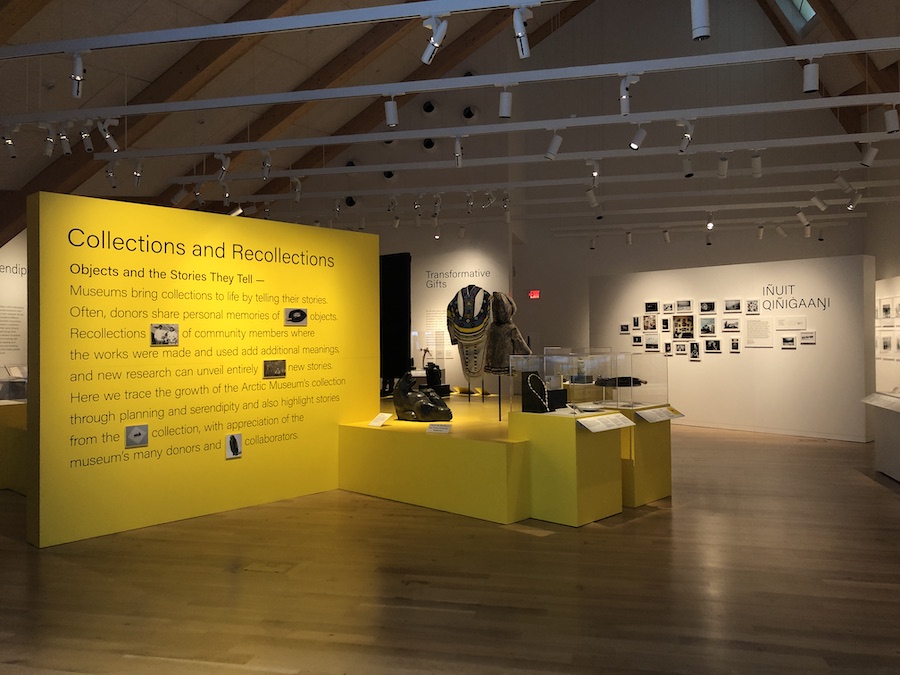
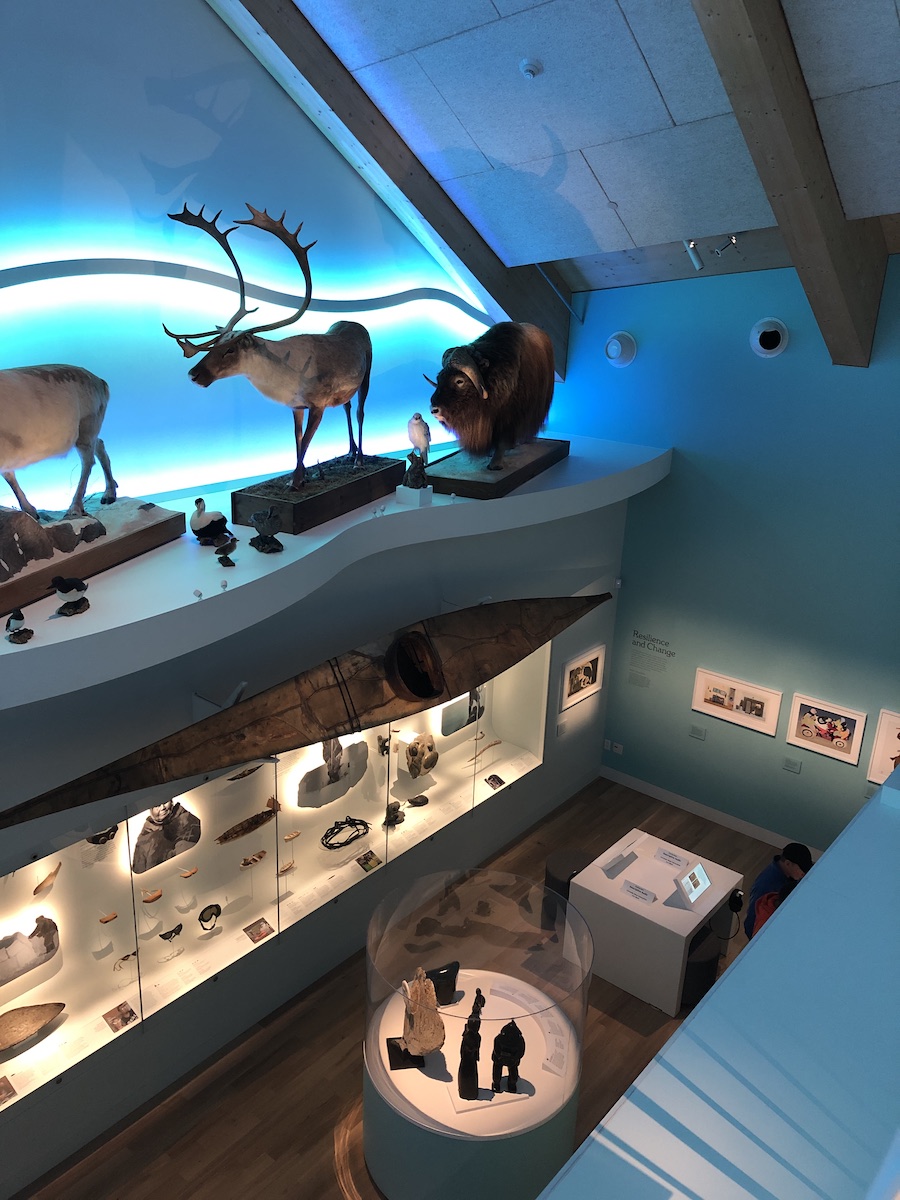
About the John and Lile Gibbons Center for Arctic Studies
The Gibbons Center provides a striking new home for the Peary-MacMillan Arctic Museum, for both its exhibition space and its environmentally controlled storage needs, and for the Arctic Studies Program. The building, described by some as resembling an iceberg, includes archeology research and teaching labs, a classroom, and offices for museum staff.
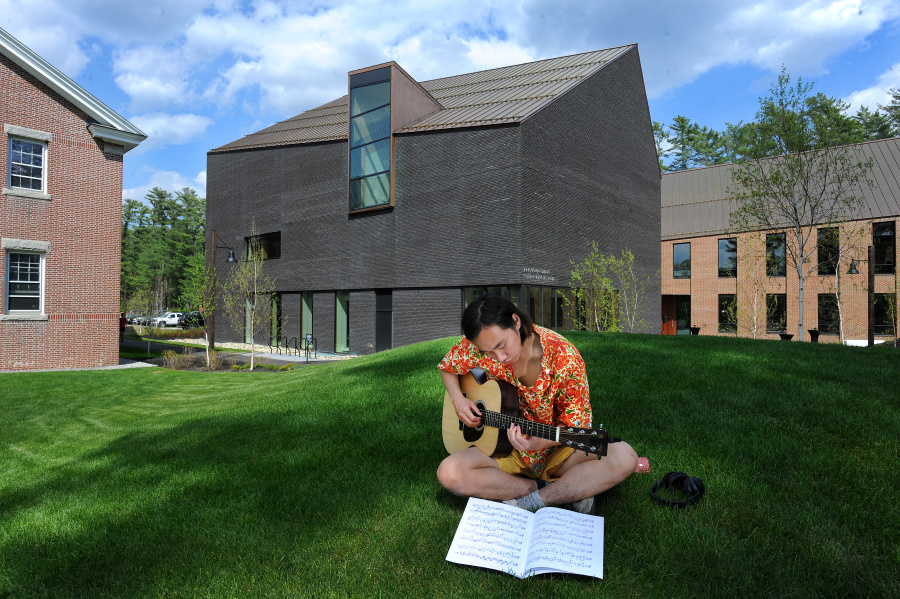
The completion of the Gibbons Center and Barry Mills Hall beside it marks a significant milestone in the development of a sustainable construction industry in Maine.
The two buildings are the first commercial construction project in the state of Maine to use mass timber, a pioneering wood-based product, as its primary load-bearing material—a fact celebrated by industry professionals and observers.
“From the College’s commitment to carbon neutrality, to its location among a grove of pine trees to the timber-rich history of Maine, the project setting seemed well-suited for a mass timber structure,” wrote Lauren Piepho, PE, a structural engineer at HGA—the lead architecture and engineering firm on the project—in the case study, “Furthering Mass Timber Construction,” published with construction partner Consigli, Inc. in July 2022.
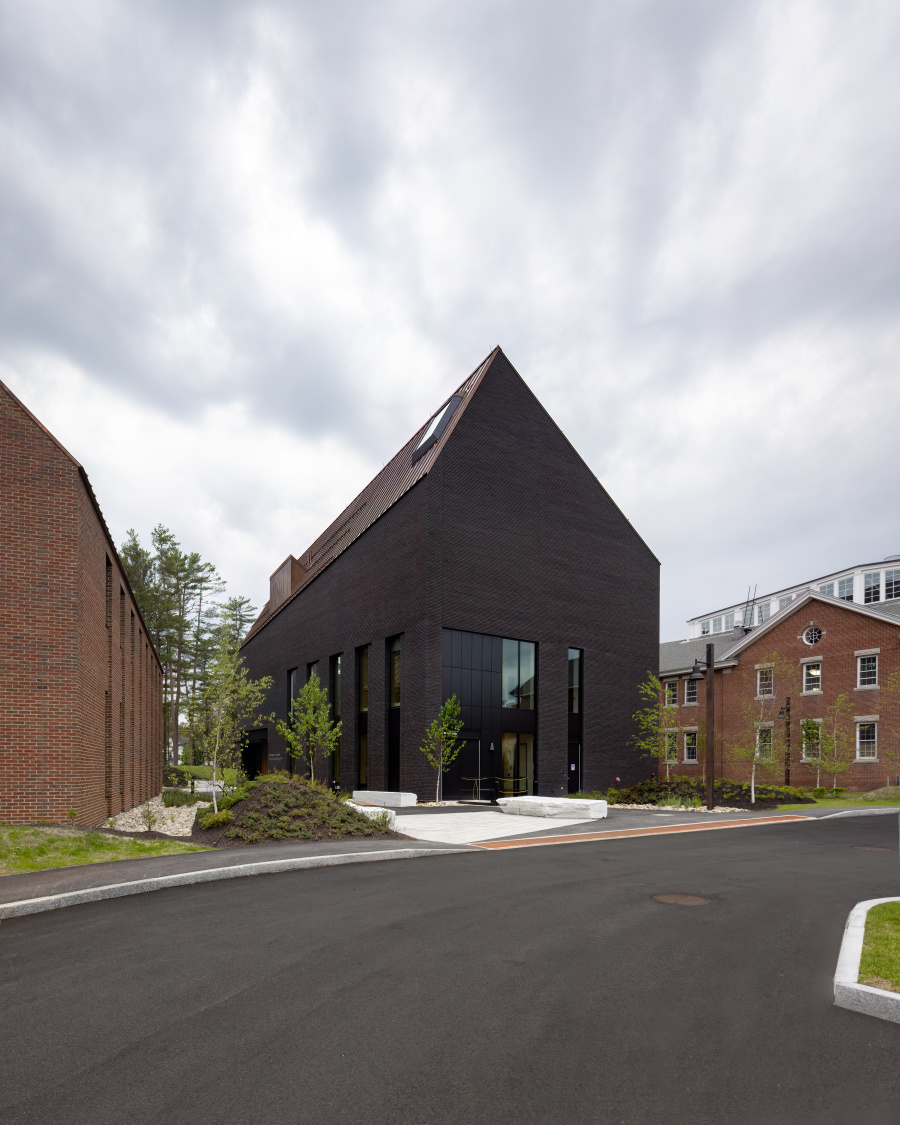
Location and Hours
The John and Lile Gibbons Center for Arctic Studies, 10 Polar Loop, is located at the corner of Sills Drive and College Street.
The Peary-MacMillan Arctic Museum is open Tuesday through Saturday, 10:00 a.m.–5:00 p.m., and Sunday 1:00 p.m.–5:00 p.m.
Parking is available at the Coffin Street parking lot.
Read also Dedication of Gibbons Center Opens New Era for Arctic Studies at Bowdoin and learn how the museum moved some of its prized exhibits from storage to the new space.